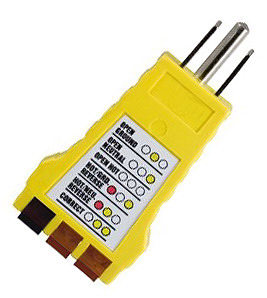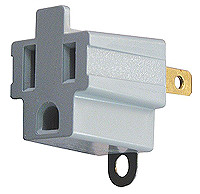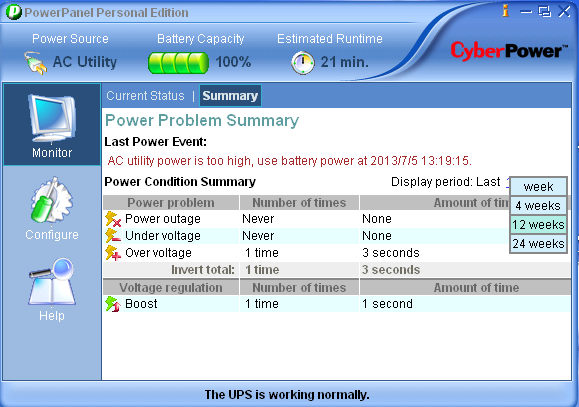AC Power & Ground Tech Bulletin
All the electronic stuff we put in runs off AC power coming from the wall outlet. We assume the power is OK but assuming anything when trying to fix a problem can make you chase your tail for a long time.
While we're making assumptions the third world engineers designing this stuff also assume your AC power is OK. They usually only design and test the equipment with good power.
On the good side modern power supplies (regulated switching electronic power supplies) are much more dependable and much less susceptible to power problems than older power supplies (non-regulated linear power supplies using a transformer). High or low voltage will often damage the older linear power supplies. Modern switching power supplies handle low or high power more gracefully.
There are various problems that can occur with AC power that aren't obvious. You really don't know if the voltage is high or low, going high or low intermittently, or if there's an occasional spike or dropout that's causing problems (like when something that uses a lot of power starts up in the building or even at a nearby building).
You don't know if there's noise on the power line that your equipment doesn't like.
You don't even know if the power outlet is wired correctly, or if electricians wired the electrical panel and ground correctly.
If your problem isn't intermittent, you're lucky. Check the voltage with a meter.
Put in a UPS with charged batteries and pull the plug from the wall. If your problems go away, it has something to do with power.
The first thing to do is use a 3 Prong AC Line Test Plug which is a quick check to see if the outlet is wired correctly (I use it every time I install something to prevent future service calls).

This cheap little tester will tell you if the hot and neutral are on the correct blades and if the ground is connected properly. But it won't tell you if the ground is actually connected to a ground rod outside, or if the ground is good. You've got to go look at that yourself.
If the problems are still there after pulling the UPS from the wall you could still have a no ground or a bad ground problem. After verifying that the ground rod is connected outside you could try running a wire from the electrical panel along the floor to a ground connection on your equipment.
Sometimes you can get a ground from the metal conduit coming from the electrical panel. Since conduit pieces are joined together with connectors that have to be tightened properly you can't count on there being a good electrical connection between pieces of conduit.
To try running your equipment without a ground (to see if the problem goes away) carry a 3 Prong to 2 Prong Adapter to run the equipment without the ground on the power plug.

Having a spare Battery Backup to use for troubleshooting makes a lot of sense. If the equipment works OK on the Battery Backup with the power plug pulled from the wall, and doesn't when it's plugged into the wall, you're pretty close to fixing the problem.
A more expensive Battery Backup / UPS with good regulation, or a commercial power regulator (without battery backup capability) may be necessary. Especially in a factory environment where when certain machines are running it degrades the power in the whole building.
You may need to leave a laptop running the Battery Backup utility software to log power anomalies. Without logging them you'll probably never find an intermittent AC power problem. We use CyberPower Battery Backups (we don't sell them), which do have voltage regulation in addition to being a backup. Their 1500VA (900W) is a good size for most phone systems and smaller servers / computers, and is fairly light to carry around (well, kind of).
The CyberPower CP1500AVRLCD is a good diagnostic tool. It connects to the PC or laptop via USB. Here's what the utility screen looks like:

APC and other backup manufacturers have similar control panels. We've had the worst luck with Minuteman Backups, which are truly terrible.
Besides "normal" power problems I've seen an employee purposely go and flick the circuit breaker for the phone system on and off rapidly (after hours), which caused a service call first thing in the morning (the CPU can only handle so much!). There was no battery backup on the system. It turns out the guy was quite literally crazy and causing all kinds of damage at that company.

 Products
Products